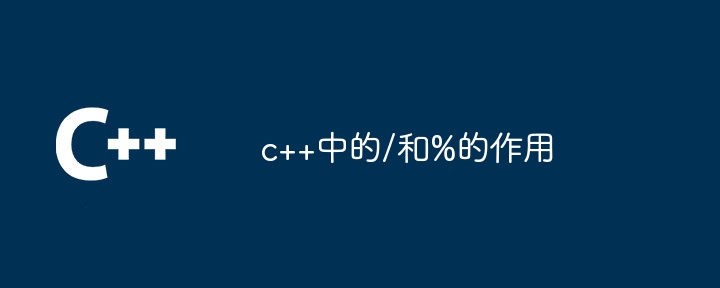
The / and % operators in C are used for division and remainder operations respectively. Division (/) returns the quotient, Remainder (%) returns the remainder in division.

The functions of / and % in C
/ and % in C are two operators, respectively Represents division and remainder.
Division (/)
The division operator (/) performs arithmetic division on two operands and returns the quotient. For example:
int x = 10 / 5; // 结果为 2
When the operand is a floating point number, the division operator returns a floating point number result. For example:
float y = 10.0 / 5.0; // 结果为 2.0
Remainder (%)
Remainder operator (%) performs a remainder operation on two operands and returns the remainder during division remainder. For example:
int z = 10 % 5; // 结果为 0
The sign of the remainder is the same as the sign of the dividend. If the dividend is positive, the remainder is positive; if the dividend is negative, the remainder is negative. For example:
int a = -10 % 5; // 结果为 -10
It should be noted that the remainder operation has no meaning on floating point operands, and can only be performed on integer operands.
The above is the detailed content of The role of / and % in c++. For more information, please follow other related articles on the PHP Chinese website!
 What are the differences between c++ and c language
What are the differences between c++ and c language
 Recommended learning order for c++ and python
Recommended learning order for c++ and python
 Cost-effectiveness analysis of learning python and c++
Cost-effectiveness analysis of learning python and c++
 Is c language the same as c++?
Is c language the same as c++?
 Which is better to learn first, c language or c++?
Which is better to learn first, c language or c++?
 The difference and connection between c language and c++
The difference and connection between c language and c++
 C++ software Chinese change tutorial
C++ software Chinese change tutorial
 Cost-effectiveness analysis of learning python, java and c++
Cost-effectiveness analysis of learning python, java and c++




